People sometimes ask me if there’s anything to photograph in Death Valley. At 5,262 square miles of desert and mountains, it’s one of the largest national parks. The valley itself is 140 miles long. Think of it. It takes three hours to drive from one end to the other. And surely, in all that space there should be something to photograph. And yet, most of it is desert. In fact, the valley itself is the hottest, driest place on earth. It’s also the lowest spot in North America at 282 feet below sea level. So what’s to photograph?
Mesquite Flats Dunes
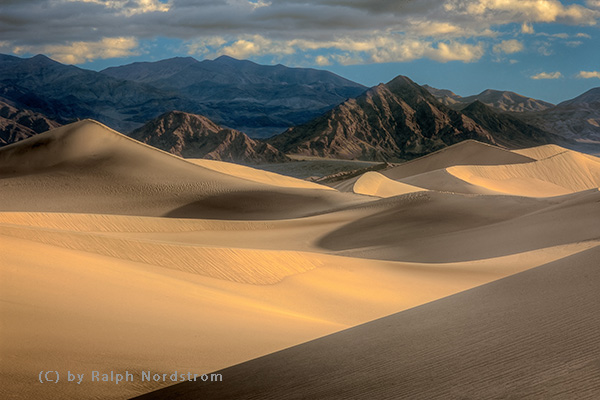
Being a desert you might expect sand dunes and you would be right. The Mesquite Flats Dunes are in the middle of the valley near Stovepipe Wells. While not excessively high, they cover a large area and provide wonderful photographic opportunities at both sunrise and sunset. I prefer sunrise which means heading out across the desert while it’s still dark to arrive at the dunes just as it’s starting to get light. I go to a place that’s not heavily visited. It’s an exciting experience.
Zabriskie Point

Zabriskie Point is one of the most visited places in Death Valley. It attracts photographers and tourists alike. At first it looks like an inhospitable badlands with not much to offer the photographer except a lot of tan wilderness. But at the right time of day these ‘bad’ lands become extraordinarily beautiful.
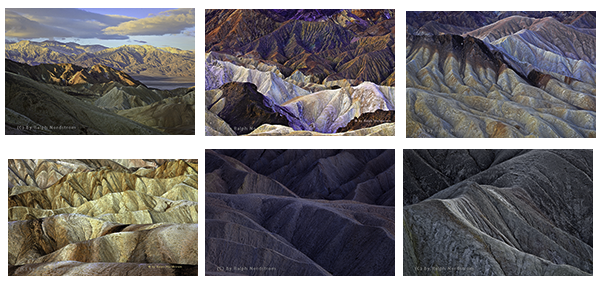
It’s all a matter of being there at the right time.
Badwater
Badwater is famous for having the lowest point in North America – 282 feet below sea level. I’ve photographed the tourist version of Badwater but have another out-of-the-way place in the Badwater area that I much prefer and it can be incomparable at sunrise.
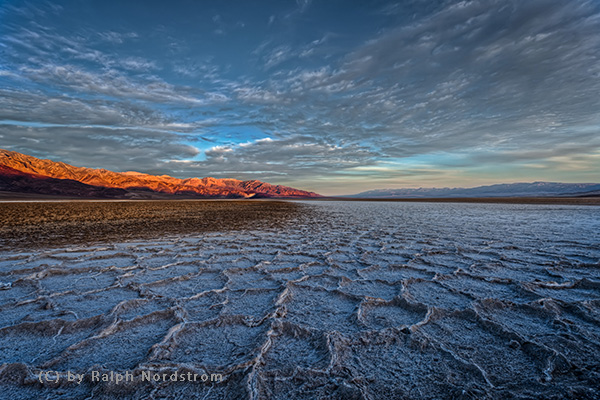
Artist’s Palette
Not far from my favorite Badwater location is Artist’s Palette where nature puts on a spectacular display of color. It’s almost beyond belief.
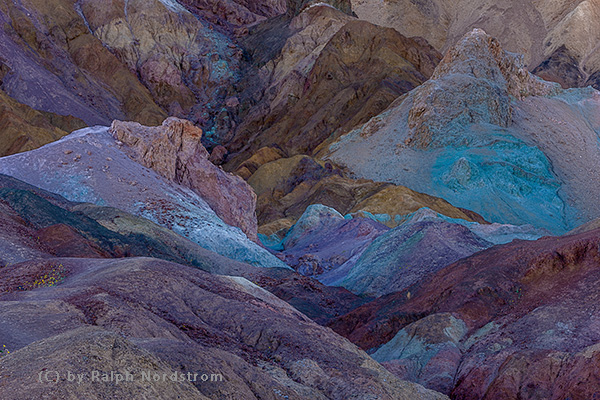
The intensity of the color is not always apparent and depends on being there at the right time of day. And there’s a very interesting lesson to learn about light what I enjoy sharing on my workshops.
Devil’s Golf Course
Also in this area is the chaotic and rugged Devil’s Golf Course.
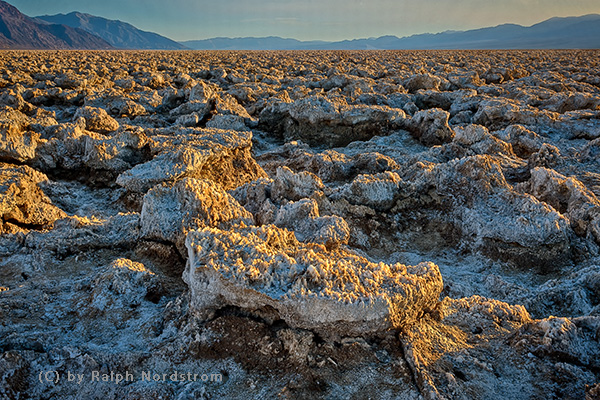
Slabs of salt are broken and twisted to create a fanciful ‘golf course’ that only the devil himself could appreciate. It’s a prime example of the role that salt plays in the valley and the variety of forms it can take. One thing I caution people about is to be careful when navigating out there. Falling would be like falling on lava with the added discomfort and humiliation of rubbing salt in the wounds.
Mosaic Canyon
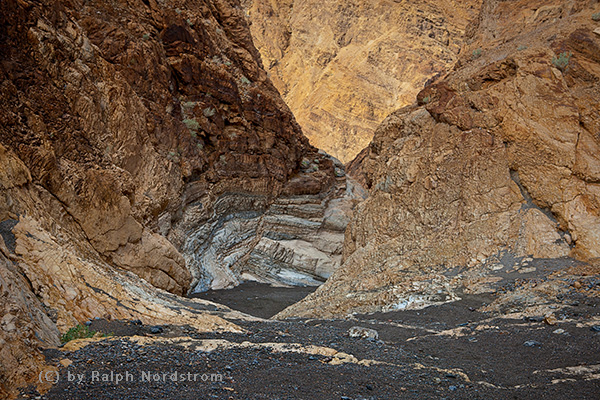
Mosaic Canyon is a gem to experience. It is a small slot canyon that is lined with mosaic type rock called breccia which sits atop a layer of marble. The canyon walls are carved and polished by occasional flash floods and make for a fascinating experience.
Cotton Ball Playa
An unmarked destination is Cotton Ball Playa. This is a huge expanse of salt that gets its name from the crystals of borax that were once mined in Death Valley. The crystals are shaped like tiny cotton balls about the size of a pinto bean. But the feature that makes it the most interesting from a photographer’s point of view is the water table is very high here and it’s not uncommon to find standing water which makes this great for reflection shots. If it’s not water you find, it’s the results of flowing water that makes this a fascinating location to photograph.
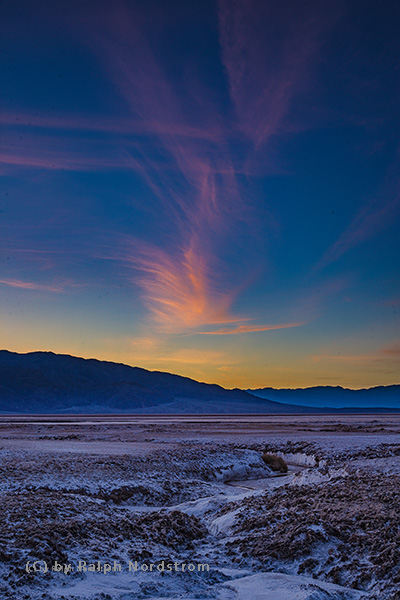
Racetrack Playa
Speaking of playas, the Racetrack is probably the best known and least accessible. It lies at the end of a 27 mile dirt road that is infamous for puncturing tires. If you’re careful and don’t go too fast, you can navigate the road without incident. Once you’re there you are treated to the moving rocks that seem to slide over the playa as if by magic, leaving trails behind them.
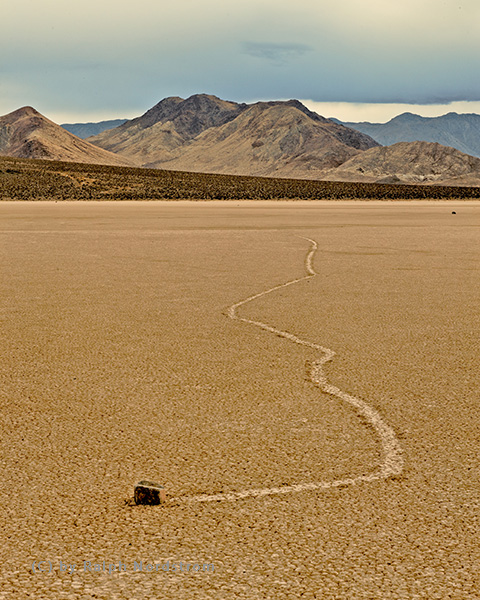
The mystery is gone, however. Up until a few years ago, no one had ever seen them move. There were a couple of theories on how it happened but they were all speculation. Finally, a team actually observed them moving and the mystery was solved. It stems from a confluence of events. First of all, the playa must be flooded to a depth of a couple of inches. This frequently happens during the ‘wet’ season. Second, the night has to drop below freezing. Third, a thin crust of ice must form. And last, when the morning sun comes up a breeze must start to blow across the playa (which is also very common in the desert). This breeze breaks up the thin ice which starts to be blown across the water. When the ice encounters a rock, it backs up behind it and eventually the force is strong enough to move the rock. As you can see, the rock can be pushed in this way for hundreds of feet.
Even though we now know how it happens, there is still a sense of mystery and awe to walk on the playa and observe this first hand.
Dante’s View
Another popular tourist destination is Dante’s View. This mile-high viewpoint is directly above Badwater and has a spectacular view of the central and northern portions of the valley. On a clear day you can easily see 70 miles.
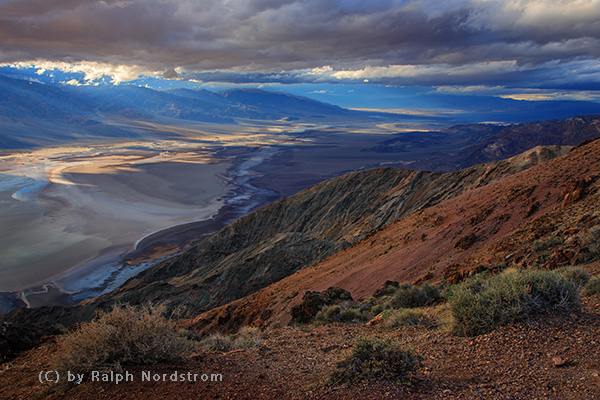
As with most of the other locations, getting the best photographs from Dante’s View is knowing the best time to be there. And as it turns out, arriving in mid-afternoon allows you to watch the shadows of the Panamint mountains to the west creep across the valley floor.
Aguereberry Point
As spectacular as Dante’s View is, I prefer Aguereberry Point for panoramic views of the valley. It is 1000’ higher than Dante’s View, is on the opposite side of the valley and further north.
There are two views from Aguereberry Point. The one to the south looks down a rugged canyon to Badwater and Dante’s View above it.
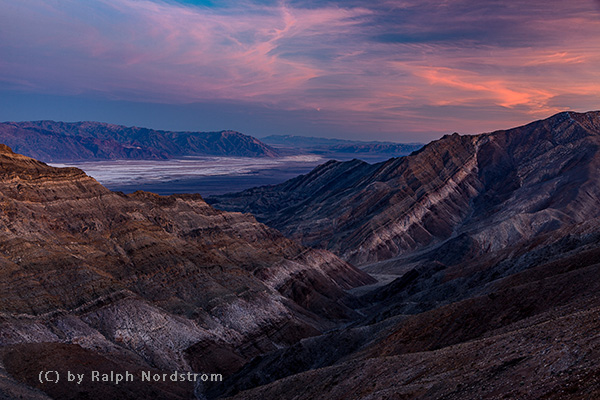
The view to the north looks down on Furnace Creek and Cotton Ball Playa.
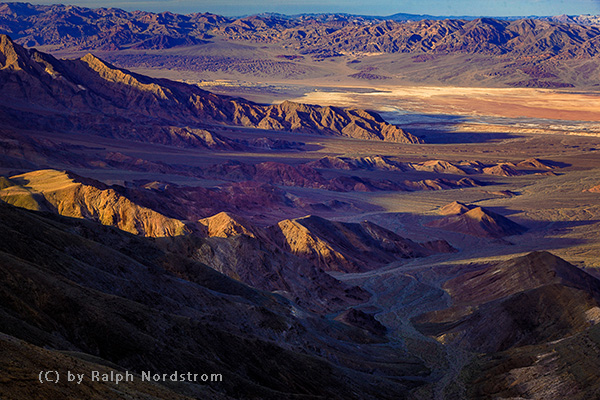
Dante’s View is accessible by a paved road where Aguereberry Point offers a bit more adventure. The last several miles are on a dirt road that starts out innocent enough but turns into a high clearance only road. It’s not near as bad as the Racetrack road but it has produced one flat tire that I’m personally aware of.
So, what do you think? Does Death Valley have enough worthwhile things to photograph to keep you busy for four days (and I didn’t cover them all)? The fact is, you can’t do it all in just four days. But you can do enough of it to have a satisfying and rewarding experience and return home with some great photographs.
And while any landscape photography experience is subject to the whims of Mother Nature, you never know when you may be honored with something like this….
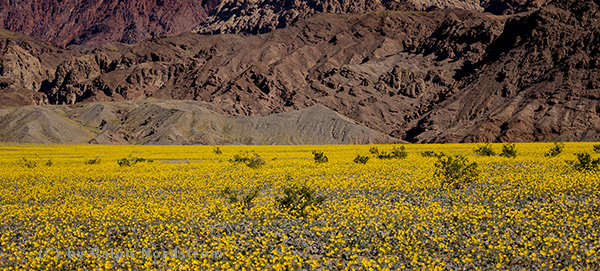
The super bloom cannot be predicted but when it happens, as it did in 2016, it is beyond belief and a thrill to behold.
I would be honored if you would choose to join me and let me show you the wonders of Death Valley first hand.
For more information, go to Death Valley Workshop.
See you in Death Valley!
(223)
